From Manual to Smart: Pallet Inverters Transforming India's Material Handling
My journey in the packing machine industry started on the factory floor. I saw firsthand the challenges of manual labor. Workers would strain their backs lifting heavy loads. Forklifts would accidentally damage valuable products. Production would stop because of a simple bottleneck in material handling. These small, daily problems add up to huge costs and risks for any business. Today, as I watch the manufacturing landscape in India evolve, I see a powerful solution taking hold. It is a shift that addresses these very problems. Smart pallet inverters are replacing outdated manual methods, and the change is remarkable.
A pallet inverter transforms material handling by mechanizing the process of swapping loads from one pallet to another. This move from manual work to smart automation in places like India cuts labor costs, prevents product damage, and makes the workplace safer. It also allows the machine to connect with modern factory systems, boosting overall efficiency and providing clear, real-time data.
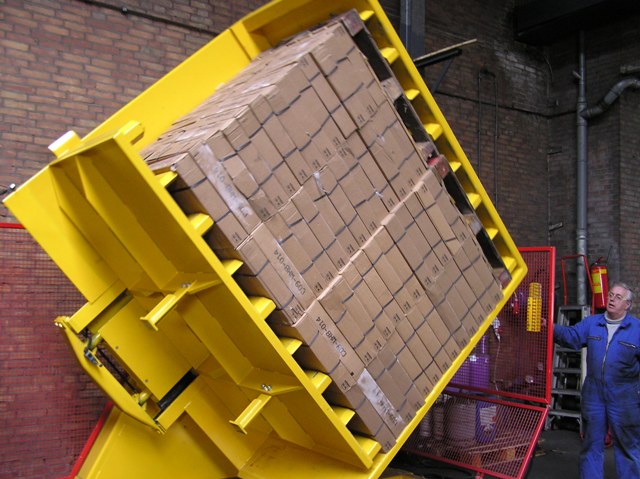
I've walked through countless factories, from small workshops to massive steel mills. I know that leaders like you are not just looking for another piece of equipment. You are looking for a competitive advantage. You need solutions that solve real problems, like high operating costs and the pressure to modernize. The story of the pallet inverter's rise in India is not just about one country. It's a blueprint for any forward-thinking industrial operation that wants to become safer, smarter, and more profitable. Let's look at how this transformation happens.
How can pallet inverters reduce operational costs and improve safety?
High operating costs and workplace accidents are a constant concern for any factory manager. You see the numbers every month: labor expenses, insurance premiums, and the cost of damaged goods. These are not just figures on a spreadsheet. A single back injury can lead to months of lost productivity and high compensation claims. One pallet of damaged products can erase the profit from an entire production run. These are real threats to your financial health and the well-being of your team. A pallet inverter is a direct solution, replacing a high-risk manual task with a controlled, automated process.
Pallet inverters reduce operational costs by automating the task of pallet exchange. This immediately lowers labor needs, accelerates the process, and significantly reduces the risk of product damage. They enhance safety by removing the need for workers to manually lift and restack heavy goods, which is a primary cause of musculoskeletal injuries in warehouses and on production floors.
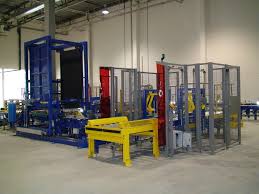
A Deeper Look at Cost and Safety
When I started my own factory, I analyzed every single cost. I learned that the most significant savings often come from improving processes, not just from cutting corners. Investing in automation like a pallet inverter is a perfect example of this principle. The return on investment goes far beyond the initial price of the machine.
Direct Cost Reduction
Let's break down the savings into clear categories. First is labor. A manual team of two or three workers might take 10-15 minutes to transfer a load. A pallet inverter with a single operator can do the same job in about 60 seconds. This isn't just a small efficiency gain; it's a fundamental change in your workflow. You can reassign those workers to more value-added tasks instead of pure manual labor. Second is product damage. Manual handling is unpredictable. Goods get dropped, boxes get crushed, and containers can spill. A pallet inverter secures the load with controlled hydraulic pressure and rotates it smoothly. This predictable, gentle handling minimizes damage, especially for high-value or fragile products.
| Metric | Manual Handling (2 Workers) | Pallet Inverter (1 Operator) | Impact |
|---|---|---|---|
| Time per Pallet | 10-15 Minutes | ~1 Minute | >90% Time Reduction |
| Labor Required | 2-3 Workers | 1 Operator | 50-67% Labor Reduction |
| Damage Rate | 2-5% (Variable) | <0.5% (Consistent) | Drastic reduction in waste |
| Injury Risk | High (Back, Strains) | Minimal | Lower insurance & compensation costs |
Indirect Savings and Enhanced Safety
The benefits don't stop there. A safer workplace is a more productive one. Musculoskeletal disorders (MSDs) from repetitive heavy lifting are one of the biggest safety issues in material handling. By eliminating this task, pallet inverters drastically lower the risk of injury. This leads to fewer workers' compensation claims and potentially lower insurance premiums. It also improves employee morale. No one wants a job that physically hurts them.
Operationally, the speed of a pallet inverter helps reduce bottlenecks. Trucks can be loaded and unloaded faster. Goods can move from the end of the production line to the warehouse more quickly. This speed contributes to higher overall plant throughput. It also gives you pallet flexibility. You can easily switch from high-quality, expensive in-house pallets to cheaper, one-way shipping pallets before dispatch. This saves you from losing your valuable assets.
What makes a pallet inverter "smart," and how does it integrate with modern factories?
You have likely invested in modern systems like an MES (Manufacturing Execution System) or a WMS (Warehouse Management System). But if your material handling relies on manual steps, there's a gap in your data. This disconnect creates blind spots and inefficiencies. Your smart factory isn't truly smart if automation stops at the end of the production line. You cannot track your goods seamlessly from start to finish. A "smart" pallet inverter closes this gap. It's more than just a machine; it is a connected data point in your factory's digital ecosystem.
A "smart" pallet inverter has a PLC (Programmable Logic Controller), sensors, and network connectivity. These features allow it to communicate with factory-wide systems like an MES or WMS. It integrates into a modern factory by becoming a part of an automated workflow. It can work with AGVs or robotic arms. It provides real-time data on cycle times, load status, and machine health. This helps create a fully visualized and optimized production process.
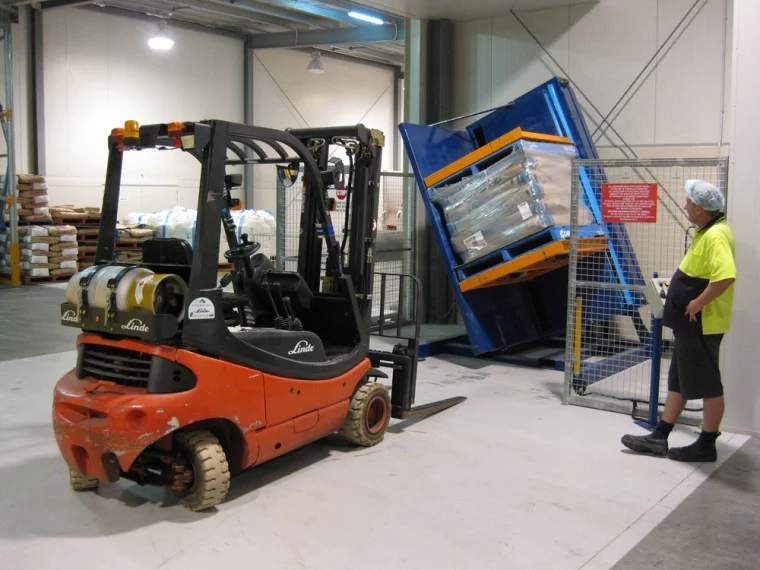
A Deeper Look at Smart Integration
I have seen factories with state-of-the-art production lines that still use manual labor for the final step of pallet swapping. This is like having a high-speed train that has to stop for someone to manually switch the tracks. A smart pallet inverter automates that final, crucial switch.
The Anatomy of a Smart Pallet Inverter
The "brain" of a smart inverter is its PLC. This controller allows for precise, repeatable operations tailored to your specific products. You can program different clamping pressures for different loads, for example. It's not a one-size-fits-all approach. The machine is also equipped with IoT sensors. Photoelectric sensors detect if a pallet is correctly positioned. Pressure sensors ensure the load is held securely but not crushed. These sensors provide a constant stream of data.
Connectivity is what ties it all together. Through industrial protocols like Ethernet/IP or PROFINET, the pallet inverter can "talk" to your central factory control system. When a pallet transfer is complete, it sends a signal to the MES. This updates the product's status and location in real-time. This level of visibility is impossible with manual processes.
Integration into the Factory Ecosystem
This connectivity unlocks powerful new workflows. Imagine this: an Automated Guided Vehicle (AGV) delivers a pallet of finished goods from your production line to the inverter. The inverter automatically swaps the product to a shipping pallet. It then signals a robotic arm to pick up the goods and place them on a wrapping machine, like one of ours at SHJLPACK. Finally, another AGV takes the wrapped pallet to the loading dock. The entire process is automated, tracked, and optimized.
This is the vision of Industry 4.0 that leaders are striving for. Furthermore, the data from the inverter's sensors is gold for maintenance. Instead of waiting for a breakdown, you can use the data for predictive maintenance. The system can track motor hours, cycle counts, and hydraulic pressure. It can alert your maintenance team when a component is nearing the end of its life. This proactive approach is key to achieving the kind of high equipment uptime, like 95%, that modern factories demand.
How do you choose the right pallet inverter for your specific needs?
The market has many options for pallet inverters. Choosing the wrong one can be a very expensive mistake. It can lead to production delays, damage to your products, and a poor return on your investment. You could buy a machine that cannot handle your load weights. It might be too slow for your required speed. Or it may not fit into your existing workflow. This risk is real for any business owner who performs a careful analysis of every investment. A systematic approach to selecting a machine ensures it becomes a valuable asset, not a costly problem.
To choose the right pallet inverter, you must first analyze four key things: your load characteristics (weight, size, and fragility), your required throughput (pallets per hour), your operational workflow (how pallets are loaded and unloaded), and your available space. This analysis helps you select the correct model, like a 180-degree inverter for durable goods or a pallet changer for sensitive items, to meet your exact production needs.
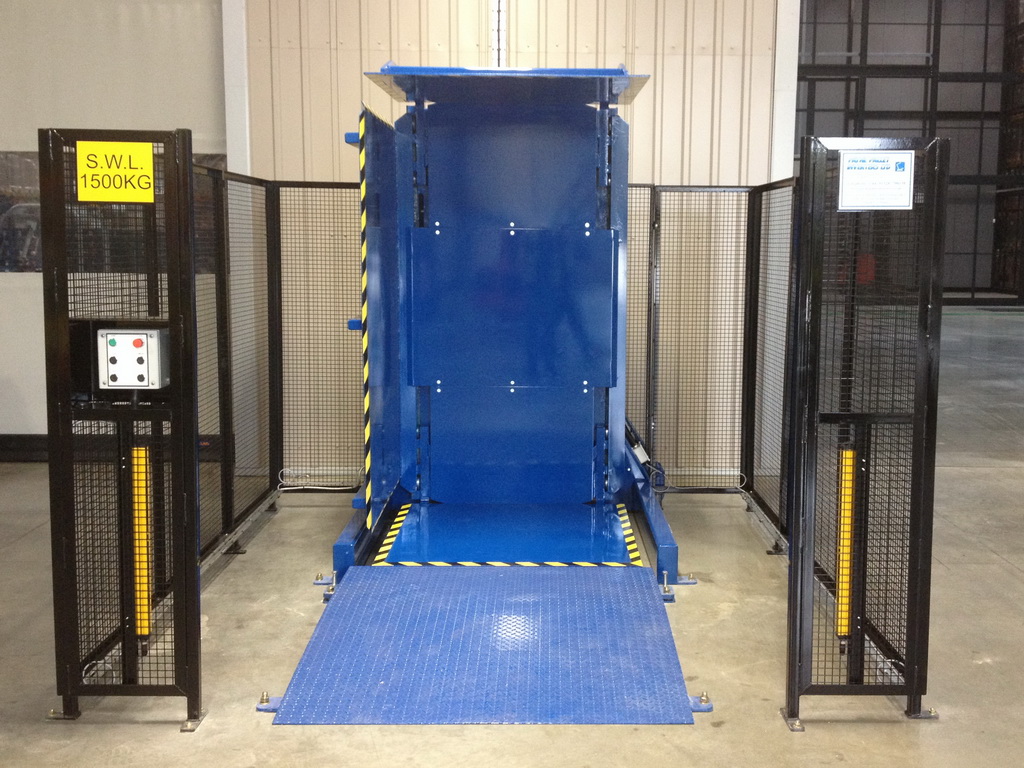
A Deeper Look at Equipment Selection
Over the years, I've learned that the best solution is rarely the most expensive or complex one. It's the one that is perfectly matched to the job. As an engineer, my goal is to provide a total solution, not just sell a machine. This starts with a thorough analysis of your needs.
Key Factors for Analysis
First, we must understand your load. What is the maximum weight you need to handle? What are the dimensions of your pallets and your products? Is your product solid like steel coils, or is it fragile like electronics? Is it in boxes, bags, or drums? The answers determine the required capacity and the type of clamping system needed.
Second, what is your required throughput? Do you need to swap 10 pallets an hour or 50? This will determine the necessary level of automation. A standalone, manually operated machine is fine for lower volumes. For high-volume operations, you'll need an in-line system that is fed by conveyors.
Third, we look at your operational flow. How do pallets arrive at the machine, and where do they go next? Are they brought by a forklift or an AGV? Do you need ground-level loading, or can you load at a raised height? The machine's design must fit seamlessly into your existing logistics.
Types of Pallet Inverters and Their Applications
Based on that analysis, we can select the right type of machine. There isn't just one kind of pallet inverter.
| Machine Type | How It Works | Best For |
|---|---|---|
| 180° Inverter (FS/FZ) | Clamps and rotates the load a full 180 degrees. | Robust, stable, and durable goods like boxed items, bagged cement, or metal parts. |
| 90° Tipper/Pallet Changer | Tilts the load 90 degrees to slide it onto a new pallet. | Sensitive loads that cannot be inverted, like liquids, pails, or fragile electronics. |
| In-Line Conveyor System | Fully automated, integrates directly into a conveyor line. | High-throughput environments like large distribution centers or bottling plants. |
| Mobile Pallet Changer | A movable unit that can be brought to the load. | Large warehouses with varied workflows where flexibility is key. |
I remember a client in the steel wire industry. They almost bought a standard 180-degree inverter. But we looked closely at their process. They needed to recover the expensive wooden pallets their coils were stored on. We realized a simple, ground-loaded pallet changer was a better fit. It saved the operator from needing a forklift for every cycle. This small change saved them about 10 minutes per coil swap, which added up to hours of saved labor and increased throughput every week. It's always about finding the right tool for the job.
What are the key safety and maintenance considerations for pallet inverters?
Bringing any new piece of heavy machinery into your facility introduces new considerations. If it is not managed correctly, it can become a safety hazard for your team and a constant maintenance headache. A serious accident can halt your production line and damage your company's reputation. And unplanned downtime from a breakdown can disrupt your entire production schedule, costing you far more than the repair itself. Modern pallet inverters, however, are designed with safety as the top priority, and a proactive maintenance plan can all but eliminate unexpected failures.
The key safety considerations for pallet inverters are features that protect operators, like mandatory safety fencing, light curtains, emergency stop buttons, and dual-hand controls. The key maintenance considerations involve creating a schedule for regular checks of hydraulic systems, electrical parts, and moving components. This should be combined with a predictive maintenance strategy that uses sensor data to prevent failures before they happen.
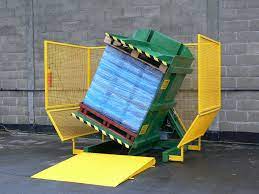
A Deeper Look at Reliability and Protection
As a factory owner, nothing is more important to me than the safety of my team and the reliability of my equipment. A machine that is down is a machine that is losing money. That's why we must focus on these two areas from day one.
Built-in Safety Features: The Non-Negotiables
A properly designed pallet inverter comes with multiple layers of safety. The first is physical perimeter guarding. A sturdy safety fence prevents anyone from accidentally walking into the machine's operating area while it's moving. The entrance to this guarded area is protected by light curtains or safety scanners. These devices create an invisible barrier. If a person or object crosses this barrier while the machine is active, it stops immediately.
To run the machine, the operator must use dual-hand controls. This means they have to press two buttons at the same time, which are located away from any moving parts. This design ensures their hands are in a safe position during the entire cycle. Internally, the machine has critical safety components like hydraulic check valves. These valves prevent the clamping platform from dropping the load if there's a sudden loss of hydraulic pressure. These features are not optional; they are essential for safe operation.
Proactive Maintenance for Maximum Uptime
Reliability comes from proactive maintenance. This means shifting from a "fix it when it breaks" mentality to a "prevent it from breaking" strategy. This starts with a simple preventive maintenance schedule.
| Frequency | Task |
|---|---|
| Daily | Visually inspect for leaks; check that safety features (e-stops, light curtains) are working. |
| Weekly | Check hydraulic fluid levels; clean sensors and reflectors. |
| Monthly | Inspect hydraulic hoses and electrical connections; lubricate moving parts as per the manual. |
| Annually | Professional service to check pump pressure, filters, and structural integrity. |
This is where the "smart" features we discussed earlier become so valuable. This is the heart of predictive maintenance. By tracking data on motor temperature, vibration, cycle counts, and hydraulic pressure, the system can identify small changes that indicate a future problem. It can send an alert that a hydraulic hose has reached 90% of its expected service life, so you can schedule its replacement during planned downtime. This is how you achieve 95% or higher uptime. It is a smarter, data-driven approach to maintenance.
My Perspective as an Engineer and Factory Owner
Reading about the journey of industrial leaders reminds me of my own path. I started on the factory floor, not in a boardroom. When you work with the machines every day, you learn things that you can't see on a report. You understand that every process, every piece of equipment, and every person is part of a bigger system. You feel the frustration of a bottleneck and the satisfaction of a smooth-running line.
What we are seeing happen in India—this fast transition from manual processes to smart automation—is not just an Indian story. It is a global blueprint for how manufacturing businesses can survive and grow. The challenges of rising costs, labor shortages, and global competition are universal. The solutions, therefore, must also be universal.
The most important point is the need for a strategic partner, not just a supplier. A machine is just steel, wires, and a motor. It's a tool. A true partner, however, understands your specific challenges. They understand your concerns about energy costs, your aging equipment, and your goals for digital transformation. A partner works with you to find a solution that delivers a real, measurable return on investment.
My mission with SHJLPACK is to share the knowledge I was lucky enough to gain on my journey. It is about more than just selling wrapping machines or pallet inverters. It is about helping others build smarter, safer, and more profitable factories. The technology is the tool. The real transformation comes from working together with a shared vision for a better way to build things.
Conclusion
Transitioning from manual to smart pallet inverters is a strategic move for efficiency, safety, and future-readiness in any modern manufacturing operation.




